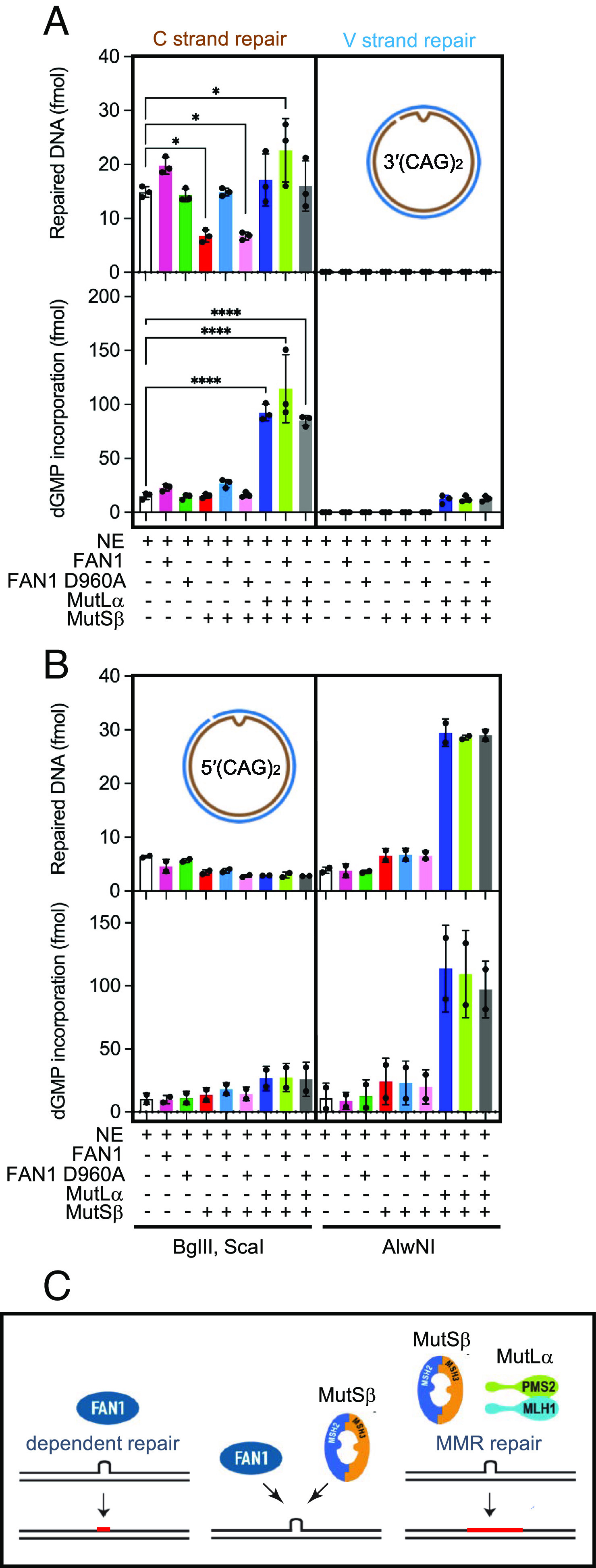Fig. 5.

DNA substrates containing (CAG)2 extrahelical extrusion are subject to FAN1-dependent extrusion removal in nuclear extracts. (A) A 3′(CAG)2 DNA substrate was incubated in the presence of [α-32P] dGTP with nuclear extract derived from MLH1−/− MSH3−/− HCT116 cells, which was supplemented as indicated with FAN1, nuclease-dead FAN1 D960A, MutSβ, and MutLα. Repair was scored by cleavage with BglII and ScaI (C strand repair) or AlwNI (V strand repair). Repair products were visualized after staining with ethidium bromide (upper graph) while repair DNA synthesis was quantitated by exposure to phosphorimager screens (lower graph) (SI Appendix, Materials and Methods). Results are mean of three independent experiments (±SD). *P < 0.05, ****P < 0.0001, one-way ANOVA with post hoc Dunnett’s test (comparison to NE only). The [α-32P] dGMP incorporation indicated corresponds to that found in repair bands only (representative images are shown in SI Appendix, Fig. S5A). (B) A 5′(CAG)2 DNA substrate was incubated in the presence of [α-32P] dGTP with HCT116 nuclear extracts as in described in A. Repair levels of either DNA strand (upper graph) or repair DNA synthesis levels (lower graph) shown are average of two independent experiments with error bars representing ranges observed. Representative images are shown in SI Appendix, Fig. S5F. (C, Left) FAN1-dependent repair relies on short repair resynthesis tract (red line). (C, Middle) competition between MutSβ-dependent and FAN1-dependent repair pathways. (C, Right) MMR-dependent repair relies on long resynthesis tracts (red line). See also SI Appendix, Fig. S5.
